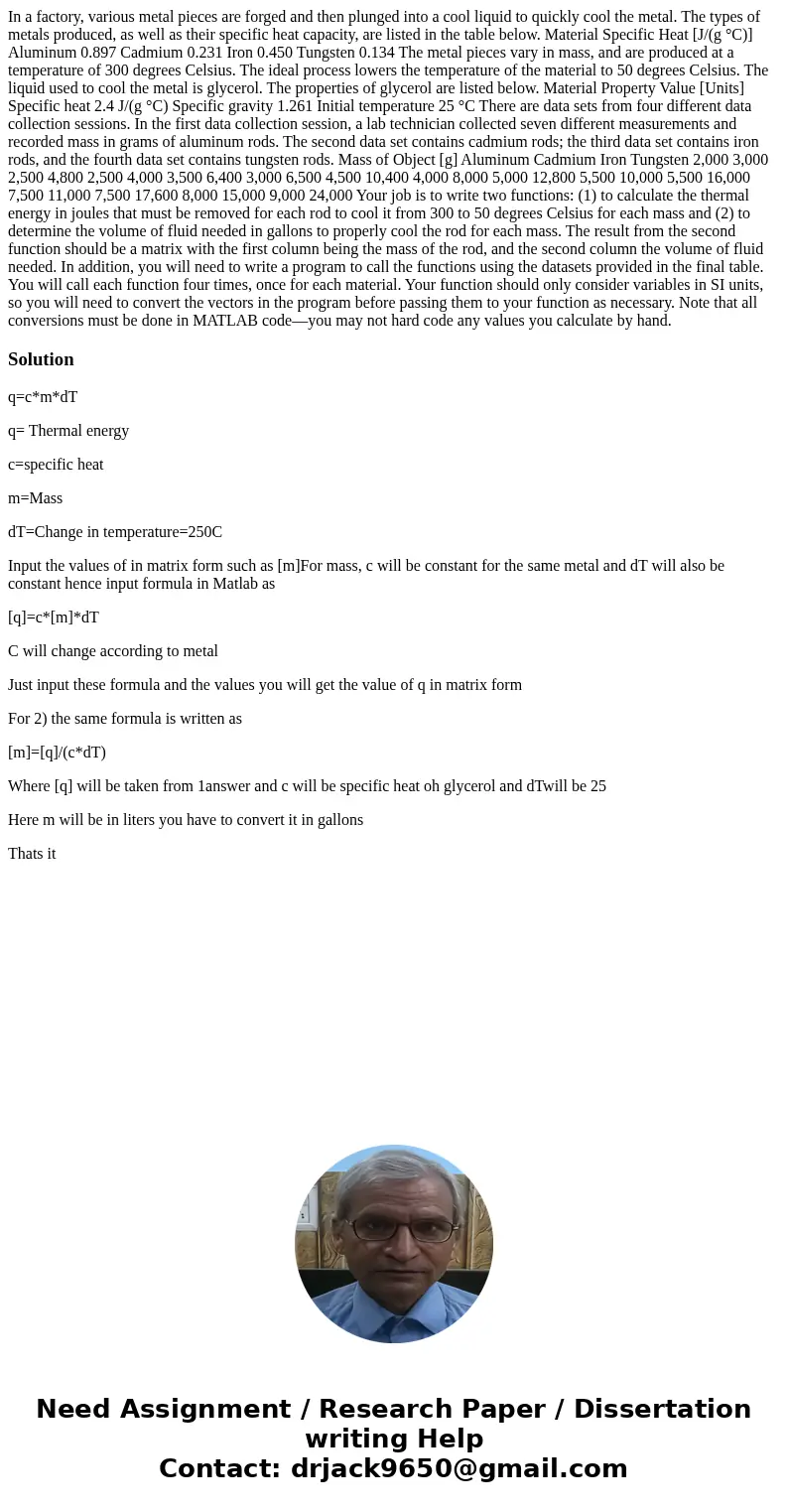In a factory various metal pieces are forged and then plunge
In a factory, various metal pieces are forged and then plunged into a cool liquid to quickly cool the metal. The types of metals produced, as well as their specific heat capacity, are listed in the table below. Material Specific Heat [J/(g °C)] Aluminum 0.897 Cadmium 0.231 Iron 0.450 Tungsten 0.134 The metal pieces vary in mass, and are produced at a temperature of 300 degrees Celsius. The ideal process lowers the temperature of the material to 50 degrees Celsius. The liquid used to cool the metal is glycerol. The properties of glycerol are listed below. Material Property Value [Units] Specific heat 2.4 J/(g °C) Specific gravity 1.261 Initial temperature 25 °C There are data sets from four different data collection sessions. In the first data collection session, a lab technician collected seven different measurements and recorded mass in grams of aluminum rods. The second data set contains cadmium rods; the third data set contains iron rods, and the fourth data set contains tungsten rods. Mass of Object [g] Aluminum Cadmium Iron Tungsten 2,000 3,000 2,500 4,800 2,500 4,000 3,500 6,400 3,000 6,500 4,500 10,400 4,000 8,000 5,000 12,800 5,500 10,000 5,500 16,000 7,500 11,000 7,500 17,600 8,000 15,000 9,000 24,000 Your job is to write two functions: (1) to calculate the thermal energy in joules that must be removed for each rod to cool it from 300 to 50 degrees Celsius for each mass and (2) to determine the volume of fluid needed in gallons to properly cool the rod for each mass. The result from the second function should be a matrix with the first column being the mass of the rod, and the second column the volume of fluid needed. In addition, you will need to write a program to call the functions using the datasets provided in the final table. You will call each function four times, once for each material. Your function should only consider variables in SI units, so you will need to convert the vectors in the program before passing them to your function as necessary. Note that all conversions must be done in MATLAB code—you may not hard code any values you calculate by hand.
Solution
q=c*m*dT
q= Thermal energy
c=specific heat
m=Mass
dT=Change in temperature=250C
Input the values of in matrix form such as [m]For mass, c will be constant for the same metal and dT will also be constant hence input formula in Matlab as
[q]=c*[m]*dT
C will change according to metal
Just input these formula and the values you will get the value of q in matrix form
For 2) the same formula is written as
[m]=[q]/(c*dT)
Where [q] will be taken from 1answer and c will be specific heat oh glycerol and dTwill be 25
Here m will be in liters you have to convert it in gallons
Thats it

 Homework Sourse
Homework Sourse